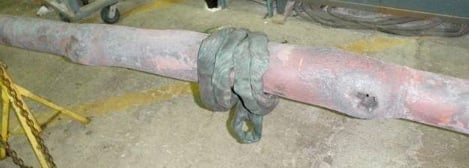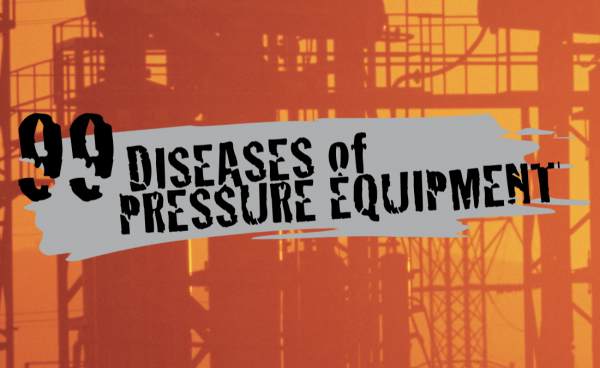Carburization involves the absorption of carbon into steel or alloy during operation in a high temperature environment, typically above 1100F (593C). Carbon from the carborizing environment enters the surface of the steel by diffusion, causing the metal to become embrittled and lose creep resistance and toughness. The result is a loss of corrosion resistance and strength and an increased susceptibility to cracking type failures. Because it occurs in high temperature environments, carburization often affects furnace tubes. It typically occurs when furnace firing is increased to compensate for a heavy coke deposit on the ID of the tube. The increase in temperature and the coke adjacent to the tube wall can produce a highly carburizing environment, in which carbon can enter steel via diffusion.
The conditions behind carburization are well understood, thus it is fairly easy to detect once it has occurred. This can be done by using eddy current or other techniques measuring increased ferromagnetism of austenitic steels. Ultrasonics and radiography can also be used to detect fissuring or cracks in more advanced stages of carburization. To help prevent carburization, industrial coatings are often applied to materials to prevent carbon in the environment from being absorbed into the material. This topic is covered in more detail in API RP 571 - Damage Mechanisms Affecting Fixed Equipment in the Refining Industry.
Metal Dusting
Metal Dusting, also known as catastrophic carburization, is simply a severe form of carburization in which the extensive carbides formed as a result of carburization lead to grains of metal falling out of the tube or piping and being swept away in the process stream. This form of degradation leaves a heavily pitted looking structure along with thinning of the tube/pipe.
Metal dusting generally affects materials in high carbon atmospheres; primarily those that operate at temperatures ranging from 300°C to 850°C. Thus, it is most commonly found in reforming units and cracker furnaces.
It is therefore important to establish an effective inspection program for these areas in particular. Proper insulation can also help protect equipment from high carbon atmospheres, thereby reducing the risk of metal dusting.
Related Topics
- Brittle Fracture
- Cavitation
- CO2 Corrosion
- Cooling Water Corrosion
- Corrosion Fatigue
- Corrosion Under Insulation (CUI)
- Cracking
- Decarburization
- Embrittlement
- Erosion Corrosion
- Fatigue (Material)
- Flue Gas Dew Point Corrosion
- Graphitization
- Green Rot
- High Temperature Hydrogen Attack (HTHA)
- High-Temperature Creep
- Hydrochloric (HCl) Acid Corrosion
- Hydrofluoric (HF) Acid Corrosion
- Hydrogen Embrittlement
- Hydrogen Stress Cracking
- Liquid Metal Embrittlement (LME)
- Metal Dusting
- Microbiologically Influenced Corrosion (MIC)
- Naphthenic Acid Corrosion (NAC)
- Phosphoric Acid Corrosion
- Pitting Corrosion
- Spheroidization (Softening)
- Stress Assisted Corrosion
- Sulfidation Corrosion
- Sulfuric Acid Corrosion
- Thermal Fatigue
- Vibration-Induced Fatigue
- Wet H2S Damage
Relevant Links
Topic Tools
Share this Topic
Contribute to Definition
We welcome updates to this Integripedia definition from the Inspectioneering community. Click the link below to submit any recommended changes for Inspectioneering's team of editors to review.
Contribute to Definition



















